 Thanks for reading this three-part series on using soil moisture sensors to inform irrigation management in vineyards. Part I focused on selecting locations to install soil moisture sensors. Here, in Part II, we take a look at depth of sensor placement and proximity to drip emitters and vines. Next week in Part III, we will cover common types of soil moisture sensors and tips for installation.
Thanks for reading this three-part series on using soil moisture sensors to inform irrigation management in vineyards. Part I focused on selecting locations to install soil moisture sensors. Here, in Part II, we take a look at depth of sensor placement and proximity to drip emitters and vines. Next week in Part III, we will cover common types of soil moisture sensors and tips for installation.
Depth of sensor placement
After determining the most representative location for placing soil moisture sensors in an irrigation block, the depth of sensor placement must be considered. Choosing the depth to place individual soil moisture sensors requires careful evaluation of the soil profile. Due to the deep rooting habit of grapevines, it is common to place sensors at increasing soil depths in order to capture the movement and potential availability of water (Figure 6).
Key Concepts
- Depth of sensor placement should be determined based on distinct changes in soil texture and effective vine rooting depth.
- Sensors placed at increasing depths can provide indication of water movement and deep percolation.
- An ideal distance from the drip emitter and vine must be determined to capture changes in soil moisture representative of water uptake by vines.
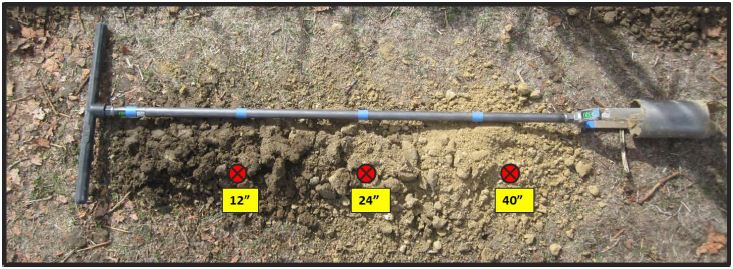
Figure 6: Sensor depth can be determined based on changes in soil texture, structure, or color in the profile. In this example, the top sensor is placed at 12 inches in the sandy clay loam topsoil, 24 inches in clay loam soil, and at 40 inches in loam soil to indicate deep percolation of water. A soil moisture sensor that also measures electroconductivity could also be used at the 24 and 40 inch depth to evaluate movement and accumulation of salts.
______________________________________________________________________________________
This Coffee Shop article originally published by the the Vineyard Team, a nonprofit organization dedicated to promoting sustainable winegrowing since 1994. More information about the Vineyard Team can be accessed from their website: www.vineyardteam.org. The original document can be accessed by clicking HERE. 2014 All Rights Reserved.
______________________________________________________________________________________
When using a probe type sensor with multiple sensor depths preset by the manufacturer, the most important decision is the total length of probe required to reach the desired soil depth. Be sure that the length matches the depth with which you wish to monitor water movement and that the soil depth is adequate for full insertion of the probe. A sensor at or near the bottom of the root zone is suggested to identify deep percolation.
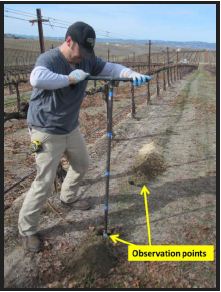
Figure 7: Before installing soil moisture sensors under the drip line, a series of observation points can be evaluated at a short distance from the desired sensor placement location. This extra step can verify abnormalities in soil that influence water movement, such as hard pans, or pockets of rock or sand.
In Figure 6 the sensor depths chosen were based on changes in soil texture: 1) 12 inches in sandy clay loam 2) 24 inches in clay loam and 3) 40 inches in loam to indicate deep percolation. In general, the most shallow soil sensors should not be placed less than 8 inches from the soil surface due to the high fluctuation of water content.
Before final installation of soil sensors, observation points can be evaluated in the area immediately surrounding the sensor location (Figure 7). Evaluation of a soil profile within 2-3 feet of a proposed installation site is a helpful practice to make sure you do not install sensors in a disturbed spot. Note, any observation hole dug within a few feet of a sensor site must be carefully backfilled and tamped to prevent rainfall or other surface water from influencing sensor readings.
Sensor placement relative to emitters and vines
The location of soil moisture sensors relative to the vine root system and drip emitters (in irrigated vineyards) will influence the usefulness of the sensor readings. If sensors are placed too far from active roots the effect of water movement in mass flow cannot be captured. Likewise, placement too far from the emitter can lead to excess watering of vines if the sensor is not within the desired wetting pattern of a routine irrigation set. Most growers will tend to err on placing sensors closer to the emitter (within 4-6 inches) in order to avoid over watering. Some trial and error may be necessary to find the best distance from emitters in a particular soil. Soil sensors are most commonly positioned within 18 inches of a vine trunk and in line with trellis and irrigation wires to reduce damage from machinery (Figures 8,9).
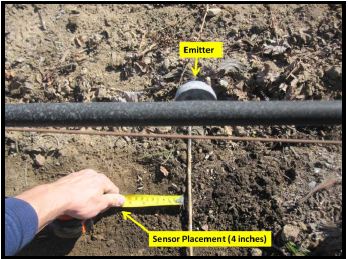
Figure 8: A typical soil moisture sensor installation showing the placement distance about 4-6 inches from a drip emitter. Some trial and error may be needed to determine ideal distance from the emitter to correlate soil moisture readings with plant water stress measurements.
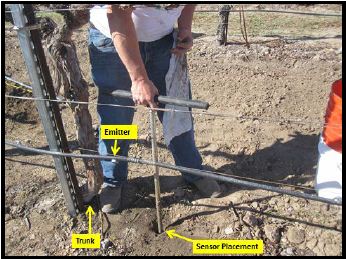
Figure 9: A typical soil moisture sensor installation showing the placement distance about 18 inches from the vine trunk, and 4-6 inches from a drip emitter.
Where to avoid placing sensors
In general, sensors should not be placed in the following areas of the vineyard:
- Areas of excessively high or excessively low vigor that do not represent the majority of the block
- Areas that do not drain well or hold water longer than the majority of the block
- Areas where soil depth is deeper or shallower than the majority of the block
- Pockets of soil that do not represent the majority of the block (e.g., random sand pockets, or hardpan)
- Areas in line with surface runoff (i.e. bottom of swales) or drainage channels in a block
- Areas on the border of the vineyard or areas near competing vegetation
- Areas that receive supplemental shade from structures other than vines or trellis
- Areas where natural soil structure has been disturbed in the past (e.g., backhoe pits, uprooted trees, backfill from erosion) (Figure 10)
- Areas that may receive significantly more or less irrigation water than the rest of the block (this may be based on evaluation of distribution uniformity)
- Areas where vines are not representative of the block (e.g., weak vines, vines of different age or rootstock)
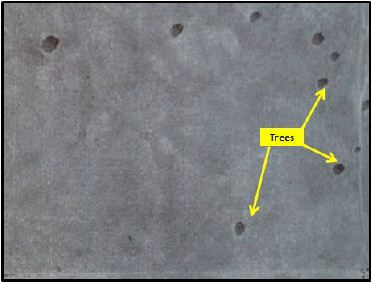
Figure 10: Trees or other objects that may disturb soil during the removal process should be mapped and those areas avoided when installing soil moisture sensors. Sensors installed in disturbed areas such as these may not be representative of conditions in adjacent undisturbed areas.

